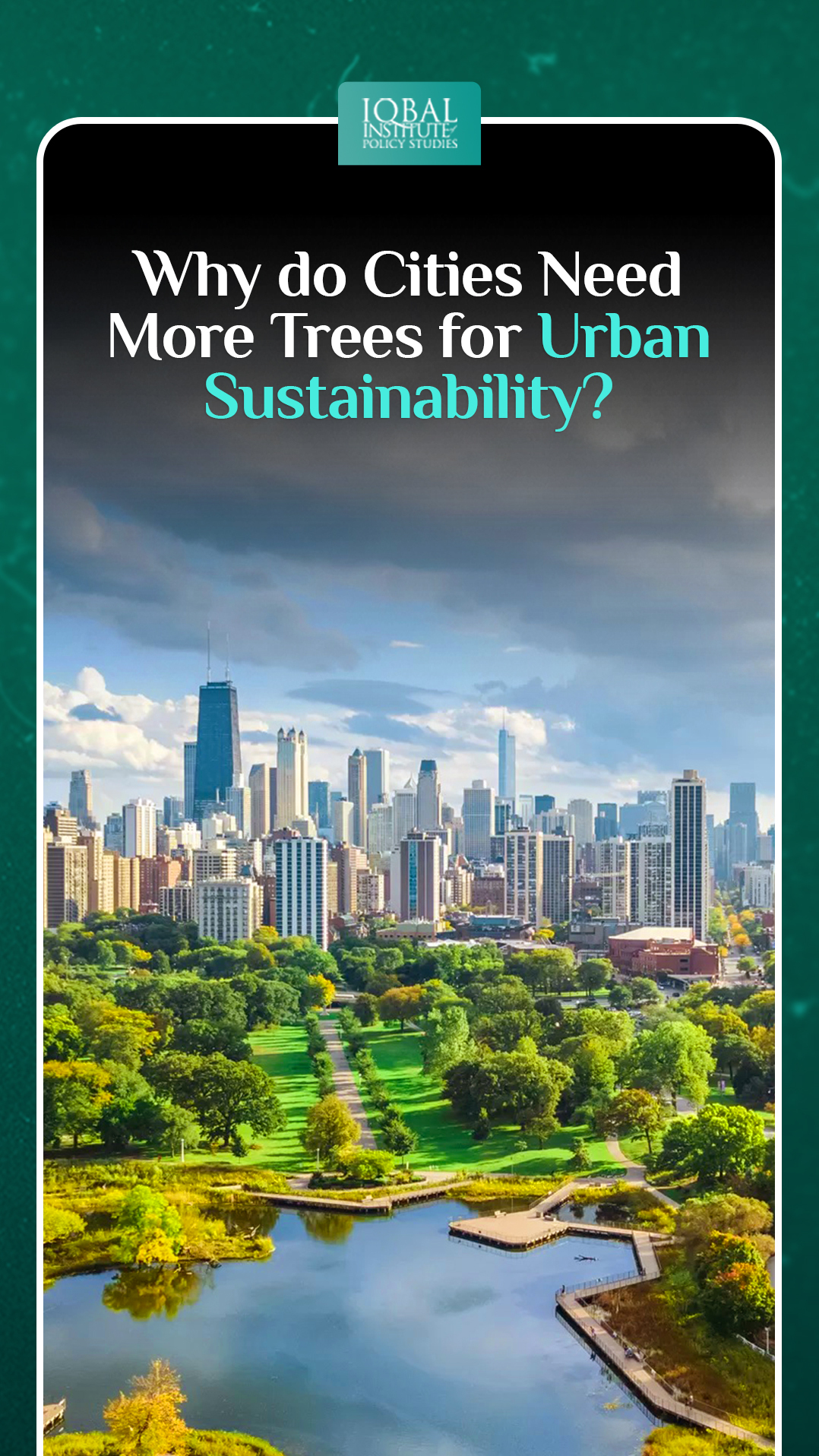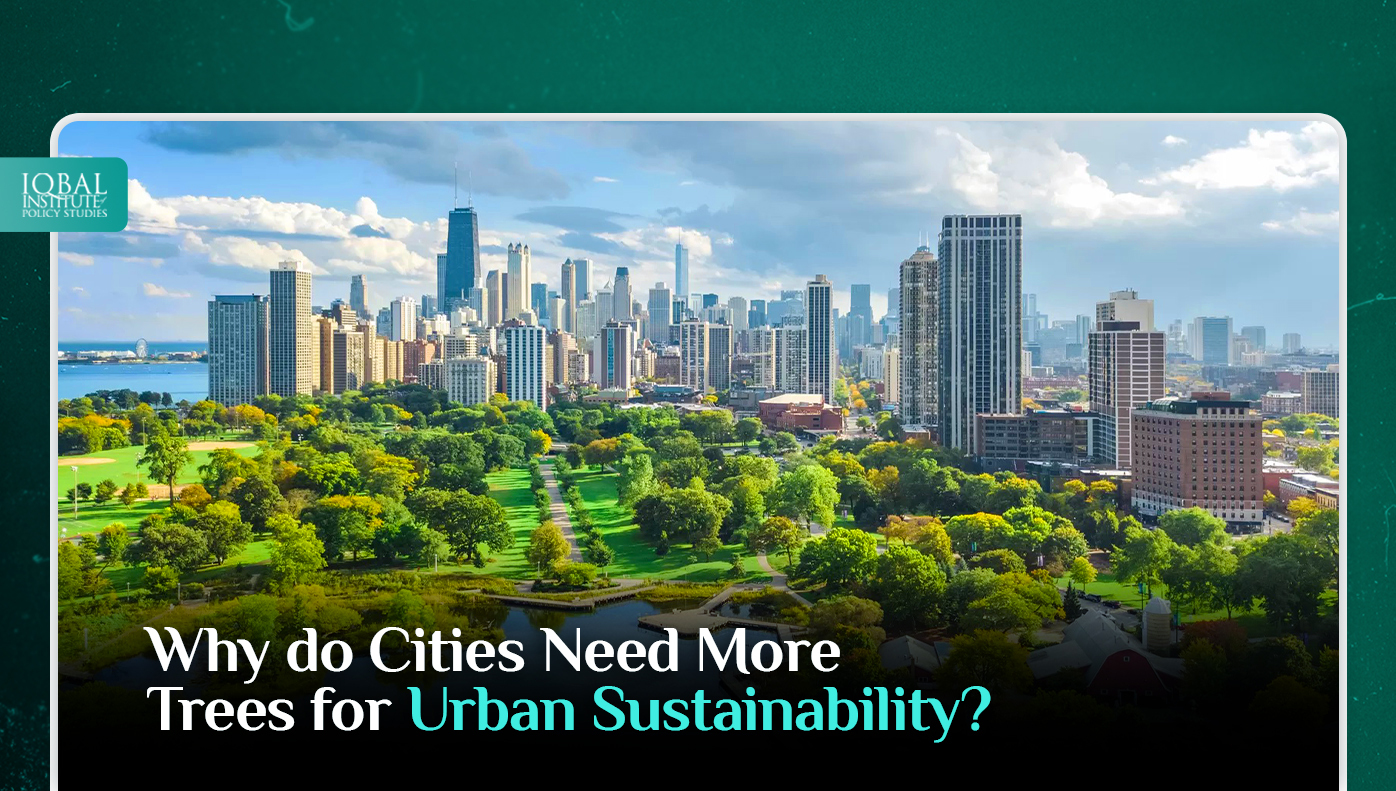Green spaces and trees provide a range of environmental and social benefits. It helps address the most persistent issues our cities face today, including well-being, health, social and environmental factors, etc. It was anticipated that in 2050 two-thirds of the world’s population will live in urban spaces. Human activities have impacted the environment enough to constitute a distinct geological change. Climate change is causing extreme climatic events and increasing ocean levels (Goudie, 2018). These are causing several challenges to the people. It raises the temperature and causes unprecedented rainfalls.
The government needs to take an effective solution to combat the mounting challenge of climate change and the degradation of natural resources. Investing in building green spaces and trees is one way to protect the environment. The penetration of trees in urban spaces is decreasing gradually. Over the last five years, the average cover tree area decreased by nearly 40,000 hectares (100,000 acres) per year (Nowak & Greenfield, 2017). The plantation of trees has both direct and indirect effects. It improves health and well-being, cognitive development and education, and climate change mitigation (Skoff & Cavender, 2019)
The Roots of Sustainability: Five Reasons Why Cities Need Trees
Tree Cover Act as Natural Climate Control
Trees have an intrinsic quality to act as a natural cooler. It decreases the heat-island effect and energy consumption for better climate change mitigation. The urban heat-island effect occurs when physical infrastructure absorbs the heat and releases it back slowly to the environment, raising ambient temperatures. The temperature in large cities is 1-3oC higher than in rural areas.
Trees nurture the environment by enhancing moisture in the air, cooling air by evapotranspiration, and deflecting the sun’s radiation. Increasing the plantation of trees is crucial because, in summer, it will protect from heat when shaded surfaces are cooler than the unshaded surface by 11-25oC, and evapotranspiration can decrease peak temperatures by 5-10oC.
The temperature rise is directly proportional to the demand for electricity. The electricity grid will overburden by the surge in cooling demand which often causes power outages and a bill hike. Trees can improve climatic conditions. A tree within five years of planting can bring 3% energy savings for one household and 12% within 15 years.
Carbon Dioxide Vacuums
Trees can create balance in the ecosystem by absorbing carbon dioxide. Trees absorb the carbon dioxide from the environment for making photosynthesis. The storage capacity of trees depends upon the size, age, and type of the tree; it ranges between one to 22 tonnes of CO2 throughout its life. Once the tree is cut, it stores CO2, which it releases back into the environment and increases the amount of CO2. It is adversely affecting the air quality. The tree also can remove two third of emissions generated as an outcome of anthropogenic activity.
Health and Well Being
Tree cover protects inhabitants from pollution-related diseases and premature death and boosts the overall quality of health. Green space can block, reduce, or buffer water, air, and noise pollution, which are comparatively higher in urban spaces. As per World Health Organisation (WHO) report, 99% of the population breathes air that surpasses the WHO guideline limits or contains high pollutants. The poor quality of air increases medical expenses. Air pollution also harms the agriculture sector and could cost 1% of the global GDP or $2.6 trillion annually.
WHO highlighted that green cities could tackle air pollution, the deadliest form of pollution. Covering at least 30% of the land area may reduce deaths annually. It was reported that people living in close proximity to green spaces possess better health immunity. Trees increase blood circulation and oxygen levels and lessen blood pressure and anxiety; biochemical released from trees as an aerosol mist contain antibiotic, antifungal and anti-rheumatic properties.
Local Community Builders
Urban area tree cover can promote health, quality of life, environment, social equality, and city inclusion. Citizens living close to the green spaces have reported living the good life. Due to easier access to parks and playgrounds, citizens are more involved in outdoor activities such as exercise and socialising within their communities. Conversely, it attracts more business opportunities and even raises real estate prices by 3-15%. By promoting the plantation of trees government can ensure the provision of social equality and inclusion. As low-income households often reside in that parts of cities that experience disproportionately high temperatures or heat waves. Tree cover areas in the suburbs are lower by at least 30% compared to affluent neighbourhoods. The citizen can benefit from environmental, health, and socio-economic benefits if the government addresses tree equity.
Promote Urban Biodiversity
Trees protect the people and environment around them and enhance urban biodiversity. A diverse tree cover protects overall biodiversity – animals, insects, and natural vegetation – further supporting urban tree health. Trees also are a refuge for native, threatened, or endangered wildlife and plants. For instance, more than 20% of the world’s avian biodiversity resides in cities. Birds live off the insects, sap, nuts, and fruits on trees and, in return, scatter tree seeds.
Preservation of high functional diversity can provide essential resources to city dwellers. For example, 88% of tree species in New York City are forgeable for medicine and food. Finally, well-maintained trees can minimise soil erosion during heavy rainfall, which wards off damage to the natural, built environment. Preventing soil erosion ensures that soil retains necessary minerals that augment the growth of trees (World Economic Forum, 2022).
Conclusion
Green spaces in cities have the potential to improve environmental issues. The government needs to take effective action to overcome the challenges of climate change and the degradation of natural resources. Investing in building green spaces and trees is one way to protect the environment. It can absorb carbon dioxide, increase health and well-being and promote urban biodiversity.
This article is written by Sehrish Irfan. Sehrish is a Research Analyst at the Iqbal Institute of Policy Studies (IIPS).
References
Goudie, S. (2018). Human impact on the natural environment. John Wiley & Sons.
Nowak, D., & Green field, E. (2017). The increase in impervious cover and decrease in tree cover within urban areas globally (2012–2017). Urban Forestry & Urban Greening.
Skoff, J., & Cavender, N. (2019). The benefits of trees for livable and sustainable communities. Plants, People and Planet.
World Economic Forum. (2022). The roots of sustainability: 5 reasons why cities need trees. Retrieved from WEForum: https://www.weforum.org/agenda/2022/06/cities-urban-trees-climate-change



Leave a Reply